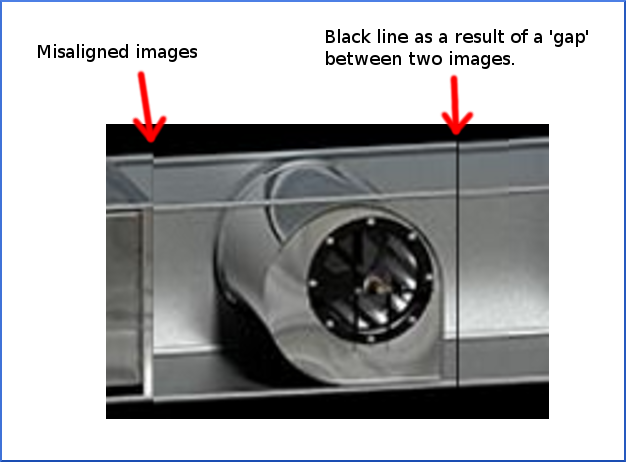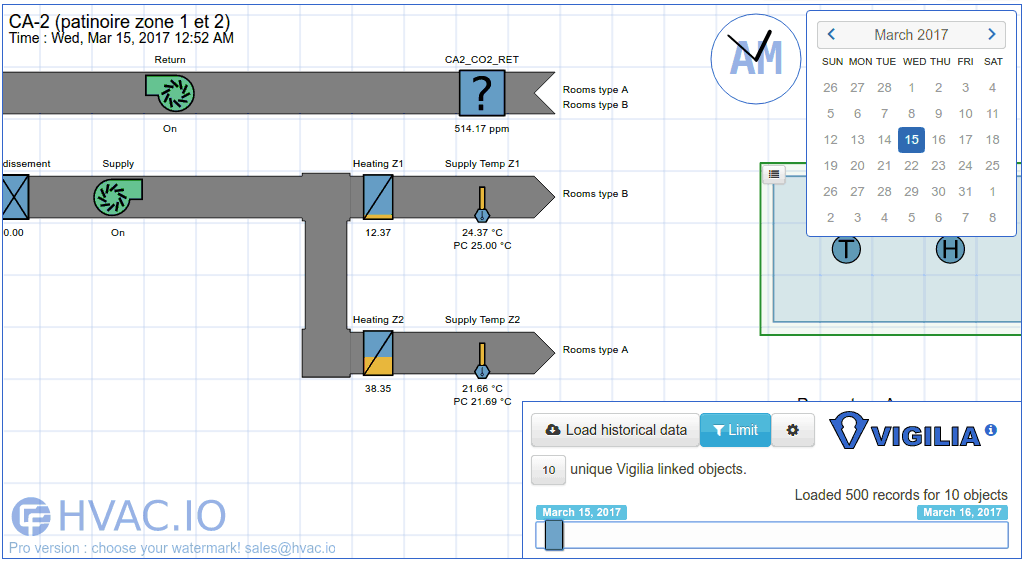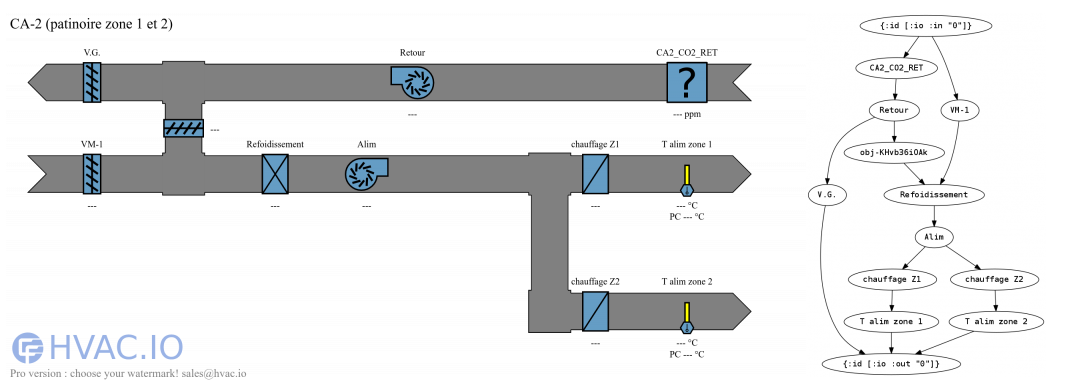Try it online!
Graphivac is a new tool to make BAS Graphics. While on the surface it may look similar to other software you’ve already seen, the underlying architecture is quite different, which gives it huge advantages.
Many BAS Graphics software are built around images. You place different images on a canvas and try to represent HVAC systems as best as you can. One downside of this approach is how dependent on the images themselves you are. Let’s take a look at the picture below :

The software is blind to what you are doing. It doesn’t know that ducts are supposed to touch. Or that a gap between images might be undesirable.
With Graphivac, we took an approach that is much more powerful and flexible. When the user add an object, we don’t store an image; we store what and where. The image is simply a visual representation of what is there.
This allows us to handle trivial matters like making sure there is no gap between duct sections.

It also means you can change the visual representation of a system without re-drawing it; selecting a different theme is enough. In other words, you can upgrade the style of all your existing drawings in a single step. Incredibly useful when you want to give a breath of fresh air to your company’s image.
In addition, it’s possible to leverage drawings to build relations between physical components and use this to make advanced analysis. (More on this later.)
Built for Browsers
Many software will give you the option to ‘export’ into a web format. The exporting process will often do a good-enough job, but will still be very limited in what is possible to do. With Graphivac, the editor itself is built for the web. No more surprises between the editor and the viewer. What you see is what you get.
We leverage the SVG (Scalable Vector Graphics) format supported by all major browsers to render crisp and zoomable drawings of HVAC systems.
Unlimited Canvas
Contrary to many BAS graphics software, Graphivac’s engine allows you to pan and zoom as much as you want. You don’t have to divide big systems into smaller drawings just so that they can fit; they will always fit!

Extensible : Modes
Graphivac is built to make it easy to add new features and capabilities. The main way to do this is via ‘modes’, each of which can give different options and tools to the users.
The 3 built-in modes in Graphivac are a good example :
- Editor : draw HVAC systems;
- Live : See live data from a BACnet network directly on the drawing;
- Historical : Replay historical data on the drawing.
This approach allows Graphivac to be extended to work with your favorite existing tools.

Metadata and Structure
We mentioned a little earlier that Graphivac’s underlying architecture gave it many advantages, notably the possibility of building relations between components. This is because we know what is where. Consequently, we know which component comes before the next.

Download and Documentation
For professional usage, you want might want to use your own Graphivac Server. A free server is available for download on HVAC.IO.
Detailed documentation about Graphivac usage can be found on the HVAC wiki.
Enjoy!


